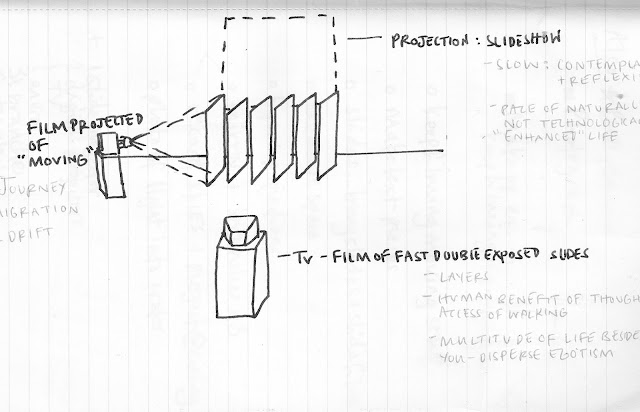Pieces of fabric and paper hang at intervals
between the projector beams to act as ‘instigators of
history and future’ – people, as we wander through time and space the light
falls on us and we know we are treading our own path and having an impact. If
the exhibit is set up on a large scale viewers can walk through the installation,
themselves becoming part of the time and space.
The footage shown on the projectors is in
fact films of photographs.
The photographs were taken in St Leonard’s Forest in
Sussex; a forest both my parents used to play in as children before they ever
met. I took the shots on a trip with my father and sister. The situation and
location suggest the millions of interlinking social histories and traces that
cross any one point in the planet.
The reason I filmed static photographs was to
bring back to life the ‘frozen moment’ in the photograph; to mobilise
perception and iterate that nature (the forest) constantly changes. It also
presents a slightly odd visual, which requires the viewer to address their
initial perception of it as a film, to look deepers.
A slide projector shows typewritten quotes
from various texts about human presence in landscape. It offers a recognition of the sequential
narrative of paths that run through the land, and makes audible (with the
steady click of the slides moving on) the idea of the rhythmic footfall enjoyed
in walking
The slides’
imagery itself highlights the inability of language's to fully communicate the
natural world, because language is a fixed, immaterial system that cannot
appeal to the intuition of our senses – language is absolute where the planet
is in constant relative flux.



















